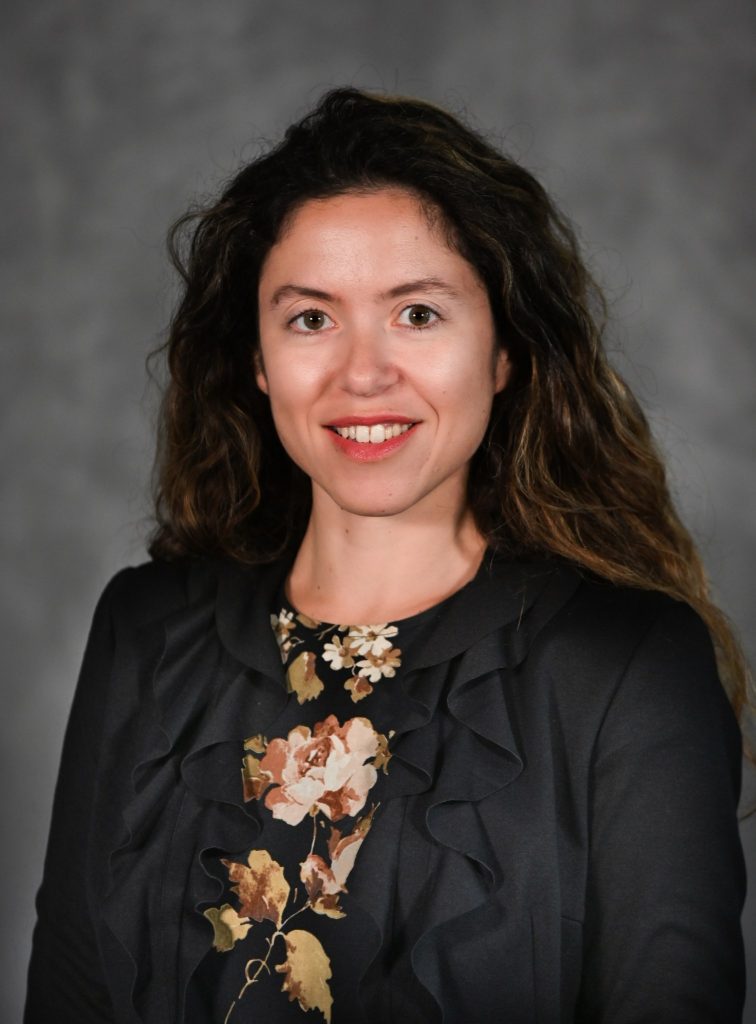Faculty and students in the UTC Department of Mathematics have been hard at work using their backgrounds in Mathematics to research and study Covid-19. The research is varied and has studied several aspects of the virus and its transmission.

Dr. Lani Gao worked with graduate student Gage Plott and undergraduate students Chris Tompkins, Andrew Calkin and Jenni Smithson to develop statistical methods to investigate the association between comorbidities and morbidity and mortality of COVID-19 patients with heart failures and hospitalized in Erlanger hospital from March 2020 to February 2021. The results indicate that older patients with Venous thromboembolism, PAD, asthma and stroke had significant longer hospital length of stay. And Older patients with DVT/PE and Drug use history have significantly higher risk of in-hospital mortality. They will present this work on UTC Research Dialogue Day in April 2021. This research project is supported by BRIC Gao and NSF HDR DSC # 1924278.
Gao (with Dr. Greg Heath, etc. ) submitted a paper titled “Maintaining Quality Acute Stroke Care during the COVID 19 Pandemic”. They conducted analysis data from Acute stroke consultations seen by Telespecialists, LLC physicians in 171 hospitals (19 states) from December 1, 2019 to June 27, 2020. And they compared pre-COVID (December 1, 2019 to March 14, 2020) and COVID groups (March 15, 2020 to June 27, 2020). The result shows the quality of acute stroke patients is significantly dropped during COVID pandemic.

Maame Akua Korsah, a graduate student in the Department of Mathematics, defended her M.S. thesis in March 2021. For her research project, Aqua constructed a mathematical model to study the transmission and spread of COVID-19. She used data from both China and the United States to validate her model. Her findings indicate that the implementation of health education and disease awareness programs, in addition to other non-pharmaceutical intervention methods such as social distancing and mask wearing, is an effective approach to slow down the spread of the coronavirus disease.

Dr. Panagiotou has been working with Tuskegee University student Quenisha Baldwin and have submitted two papers for publication. The research is on how the novel coronavirus SARS-CoV-2 infects human cells using a mechanism that involves binding and structural rearrangement of its spike protein. Understanding protein rearrangement and identifying specific residues where mutations affect protein rearrangement has attracted a lot of attention for drug development. They use a mathematical method to associate a local topological/geometrical free energy along the SARS-CoV-2 spike protein backbone. Our results show that the total local topological free energy of the SARS-CoV-2 spike protein monotonically decreases from pre-to post-fusion and that its distribution along the protein domains is related to their activity in protein rearrangement. By using density functional theory (DFT) calculations with inclusion of solvent effects, we show that high local topological free energy conformations are unstable compared to those of low topological free energy.
Panagiotou is also working on a project with the Oak Ridge National Laboratory and has submitted one paper based on this research. The researchers use the quantum chemical density-functional tight-binding (DFTB) method to perform geometry optimizations for 8840 binders from the SWEETLEAD database and perform a topological analysis for their binding interactions with the SARS-CoV-2 Spike protein using Vina scores determined through a combination of classical molecular dynamics and docking simulations in a recent paper. Our results show a decrease of the Vina score with increasing Average Crossing Number of the ligands. We also find a decrease of the Vina score with the maximum linking between segments of the ligands and a decrease of the Vina score with the maximum local torsion in a ligand. These results suggest that ligands with inflection points and local turns are stronger binders than at binders. These results suggest that topological analysis provides a potentially efficient screening tool for strong binders.
Leave a Reply